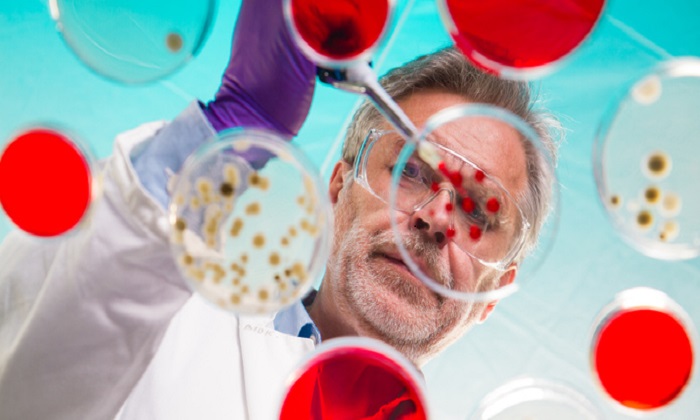Out-Law / Your Daily Need-To-Know
Out-Law Analysis 8 min. read
Incentivising innovation in life sciences requires a mix of solutions

05 Oct 2020, 1:56 pm
From exploring potential new treatments for rare diseases, to identifying second medical uses of products already deemed to be safe and effective for use in humans or improvements in the dosage and mechanism of delivery of treatments, life sciences companies are at the heart of advancements in medicine.
The specific role medicines regulation can play in incentivising innovation in life sciences was explored in a recent webinar hosted by Pinsent Masons, the law firm behind Out-Law, where the guest speakers were Sarah Garner, the acting programme manager for health products and pharmaceuticals for the World Health Organisation (WHO) in Europe, and Constance Vercambre-Lallia, the head of exclusivity litigation at Novartis.
There was consensus across the panel that a one size fits all approach to incentives is not realistic, but rather a holistic view of the incentives provided for in the life sciences regulatory system, intellectual property regime and framework of pricing and reimbursement, is necessary to ensure innovation of all kinds across the sector is incentivised in an appropriate way.
The tensions that exist
A balance must be struck when considering how to incentivise innovation in life sciences.
On the one hand innovators will commonly pour huge amounts of time, money and other resources into R&D, often with no degree of certainty about the success of projects or the commercial returns they might achieve. Some projects fail altogether, and in other cases rivals will develop and launch their products faster and achieve a head-start in the market. This means that the framework for encouraging investment in life sciences research needs to provide sufficient rewards to enable such investment.
On the other hand, competition in markets is widely recognised as healthy for driving innovation. Allowing businesses long periods of exclusivity to sell their products can, in some circumstances, dissuade others from exploring potential improvements to those products that could ultimately benefit patients. This can lead to higher prices in the absence of competition that can put pressure on public health budgets which are already under strain.
In many respects the existing intellectual property (IP) framework and regulatory regime has served to balance out these competing factors.
In Europe, patent rights apply for up to 20 years and life sciences companies can apply for supplementary protection certificates (SPCs) to extend their rights over products for up to an additional five years – a measure that recognises that it can take years for pharma patent holders to be able to commercialise their rights under those patents because of the time it takes to develop initial patented innovations into final products through rounds of clinical trials to satisfy regulators that the products are safe and effective.
IP rights may not provide any incentive or a sufficient incentive in all cases. For example, if the innovation is not deemed to be novel or inventive for patent purposes, or where the circumstances are such that in a particular therapeutic area the IP regime might not provide a complete answer. There is, however, a cross over between the IP regime and the regulatory framework which also rewards some innovative activity that benefits patients.
Originators can enjoy regulatory data protection for a period of eight years, such that the clinical trial data relied on by the originator for the purpose of obtaining a marketing authorisation cannot be relied on by a rival manufacturer in obtaining their own marketing authorisation. There is also marketing protection for a further two years that allows generic manufacturers to submit an application for a marketing authorisation but prohibits them from launching.
Orphan designated drugs, those for very rare diseases, will benefit from a 10 year period of market exclusivity, and paediatric extensions can be secured where companies have undertaken research to investigate the benefits and risks of medicines in paediatric patients, to prolong periods of exclusivity of SPCs by six months or orphan drugs by two years.
Concerns about the current system
One of the concerns expressed about the existing system of incentives in life sciences is the potential for 'over compensation' – the idea that the rewards available to businesses for some kinds of innovative activity are disproportionate to the level of risk taken on with their project investments.
Only 28% of the approved products under the orphan medicines regime target diseases for which there were no alternative treatments
In our recent webinar, Sarah Garner of the WHO said the exclusivities available for secondary indications for products can give companies scope to charge high prices for products that allow them to achieve returns well in excess of the costs they incur in R&D and clinical trial testing.
However, Constance Vercambre-Lallia of Novartis said that most of the time the regulatory exclusivities run in parallel to patent exclusivities and therefore don't provide for extra incentives.
Some of the discussion during the webinar focused on the effectiveness of the EU's orphan medicines regime. The European Commission is currently in the process of reviewing the Orphan Regulation as well as the Paediatric Regulation and considering the effectiveness of both instruments to incentivise companies to bring products to market for rare diseases and paediatric patients. The Commission recently published a staff working document containing their evaluation.
The Commission's report has highlighted areas where the orphan medicines framework has worked well, and others where it has not. For instance, by 2017, 142 unique orphan medicines had received a European marketing authorisation for 107 orphan indications and, in a best case scenario, these products had helped meet the needs of up to 6.3 million EU patients out of 35 million people suffering from rare diseases in the EU. The real effect of market exclusivity stemming from the orphan medicines regime is calculated to be an additional protection period of an average of 3.4 years, with the value of this reward estimated at 30% of revenue from sales of orphan medicines.
However, only 28% of the approved products under the orphan medicines regime target diseases for which there were no alternative treatments. Analysis of products approved indicates that the Orphan Regulation is becoming less effective in directing research to areas where there are no treatments yet and that product development tends to cluster around certain more profitable therapeutic areas, such as products for rare cancers which may also have applicability for the treatment of other cancers which have a higher profit potential.
The Commission said that market exclusivity awarded to orphan medicines has helped boost profitability of those products in 73% of cases, but that there has been overcompensation in the 14% of cases where orphan medicines have an annual turnover of greater than €100 million in the EEA.
It is a similar mixed picture in respect of paediatric medicines, according to the Commission. Whilst the Commission is of the view that the Paediatric Regulation has met some of its aims, in terms of increasing high quality research into safety and efficacy of medicines in children, it has perhaps missed the mark in terms of others – with only six paediatric use marketing authorisations (PUMAs) granted out of the more than 200 new centrally authorised medicines authorised for use in children by 2018.
A more targeted approach?
The challenge facing policy makers, financiers, regulators, industry and patient groups is how the overall system of incentives can be calibrated to appropriately and proportionately encourage all types of innovation necessary in the world of medicine.
The same incentives that will encourage progress in the world of personalised medicine are not necessarily going to work for supporting the development of new treatments for rare diseases, for example, and some thought might also be given as to whether SMEs need additional support in comparison to global pharmaceutical companies to move innovative projects forward – the European Medicines Agency (EMA), among others, already provides some support through fee exemptions and reductions for certain pre- and post-authorisation regulatory procedures.
Constance Vercambre-Lallia
Novartis
The challenge ... is how you make an exclusivity system for the development of drugs when you don’t know when they’re going to be needed or for what medical problem
Some schemes are in place to help fast-track new medicines through the regulatory process already. The EMA's priority medicines (PRIME) regime, for instance, aims to incentivise development of medicines that target an unmet medical need – this being either products providing a major therapeutic advantage over existing therapies, or benefiting patients without treatment options. The scheme promises accelerated assessment and scientific advice enabling early dialogue between the applicant and the regulator to speed access to market. However, since its introduction in 2016 up to July 2020, only 70 products had been accepted onto the scheme out of a total application number exceeding 300. This raises questions of whether the barriers for obtaining PRIME status are too high or the resource demands on the EMA to enable the scheme too burdensome.
Another area where bespoke incentives could be explored is in relation to the threat posed by antimicrobial resistance (AMR). AMR is recognised by scientists as a growing problem – multidrug resistant bacteria render existing antimicrobials ineffective. If unchecked, this development will pose a health risk to the global population.
However, as Constance Vercambre-Lallia of Novartis highlighted, the problem with developing antibiotic medicines is that the market potential is limited. Over-prescription of antibiotics has the potential to expedite the evolution of bacteria and render the treatments ineffective, so doctors tightly control their use. Constance Vercambre-Lallia said the traditional exclusivity system does not make up for the resultant restriction on sales of new antibiotics, necessary to seek to minimise resistance developing.
A more flexible 'push and pull' system of incentives could be considered, Vercambre-Lallia said, to lower the cost of R&D for new antibiotic medicines in the first place and also offer greater rewards for products that work successfully. The challenge, which also applies currently in the context of developing medicines needed for the Covid-19 pandemic, is how you make an exclusivity system for the development of drugs when you don’t know when they’re going to be needed or for what medical problem, she acknowledged.
Sarah Garner
WHO
Now is the time to revisit the question of funding for the development of new drugs
Sarah Garner of the WHO said new push and pull mechanisms need to be thought through, with consideration needed as to who provides investment and under what conditions. Garner said a system of higher prices for medicines but more restricted access to those medicines for patients is to be avoided. The debate on incentivising innovation in life sciences has run for years, and Garner highlighted the proposals outlined in the WHO's global strategy and plan of action on health, innovation and IP, which was published in 2014, as an example. She said that while there was consensus on the problem, support for funding pilots for 'pull' initiatives fell away. She said now is the time to revisit the question of funding for the development of new drugs.
Like in many other industries, collaboration will be important. Garner highlighted the opportunity to build on the successful collaborations across the life sciences sector during the Covid-19 pandemic in working towards a long-term solution to the question of improving patient access to new medicines. The WHO Regional Office for Europe has helped develop a new initiative, launched in September, designed to bring stakeholders together from across the continent to share ideas on the topic.
For their part, the pandemic has shown that regulators are willing to move with the times and adopt a flexible and fast-tracked approach to meet public health needs. In the long-term it is unrealistic and undesirable to think that the regulatory system could be built around emergency use authorisations or similar approaches as the norm for all prospective new treatments, but when the time is right there should be a period of reflection from policy makers and regulators on what flexibilities enabled during the pandemic can be retained to the benefit of both industry and patients.
The debate over changes to the existing incentives regime will need to take account of the changes to the system of drug discovery and development we will see as technology and the power of data continues to advance. There is an argument to say that innovation in this area should itself be incentivised, given the potential benefits it could deliver for health care, but there is equally a body of opinion that market forces will drive innovation without regulatory intervention and that the pace of change would be too fast for the regulatory system to keep up with in any case.
Overall, the regulatory system of incentives cannot be viewed in isolation. A holistic view of what is needed and where, what is fair reward for risks taken and investments made, and who should ultimately pay for the development of new treatments, is required.


